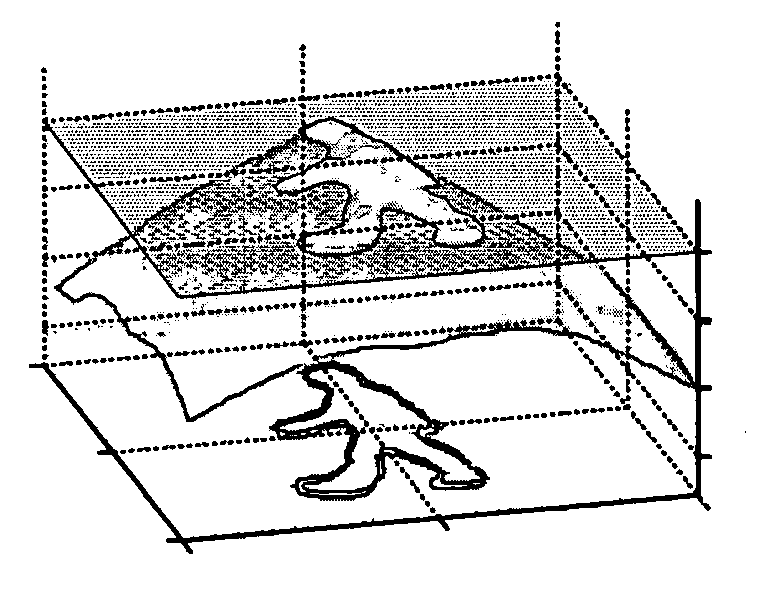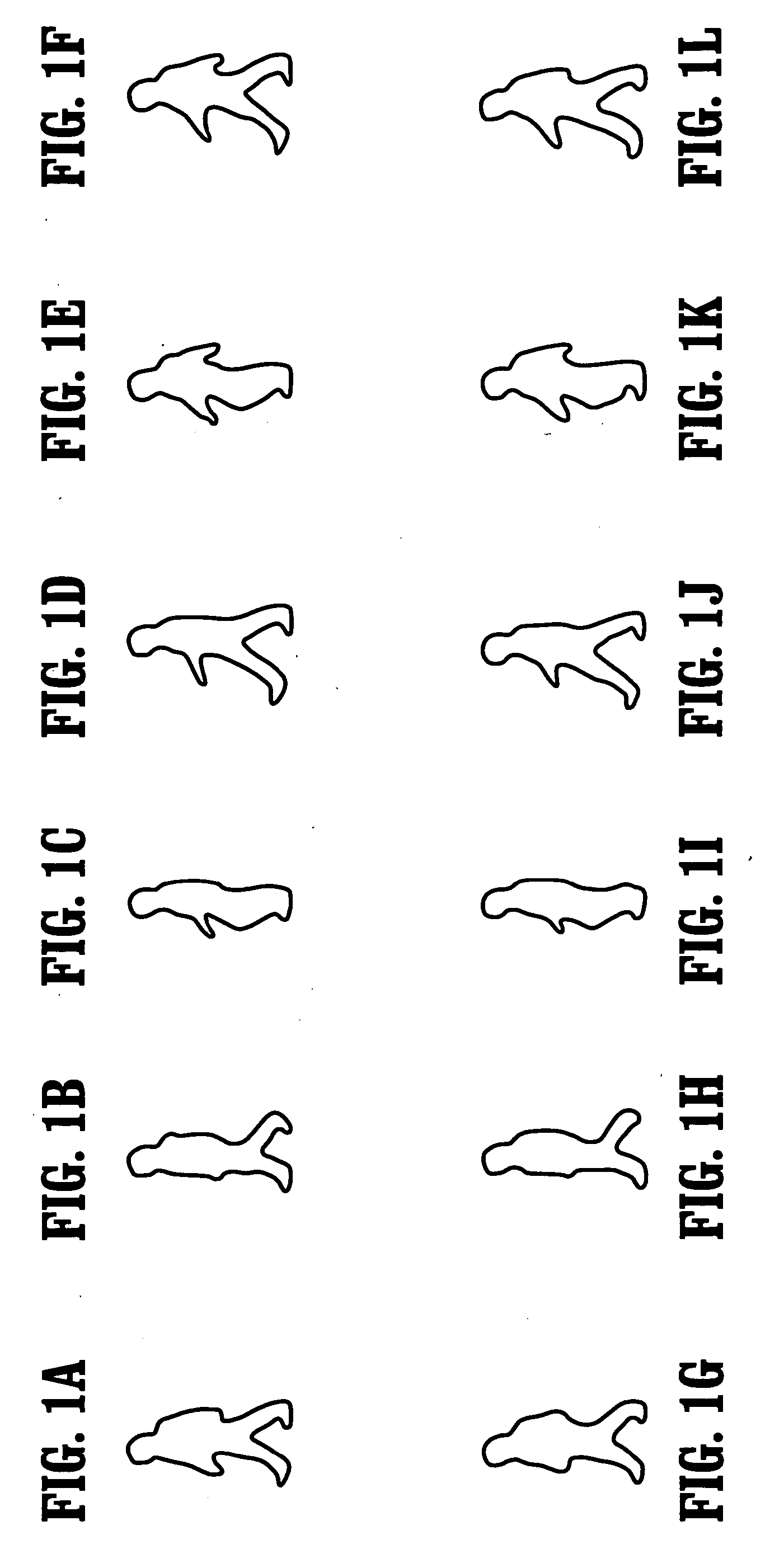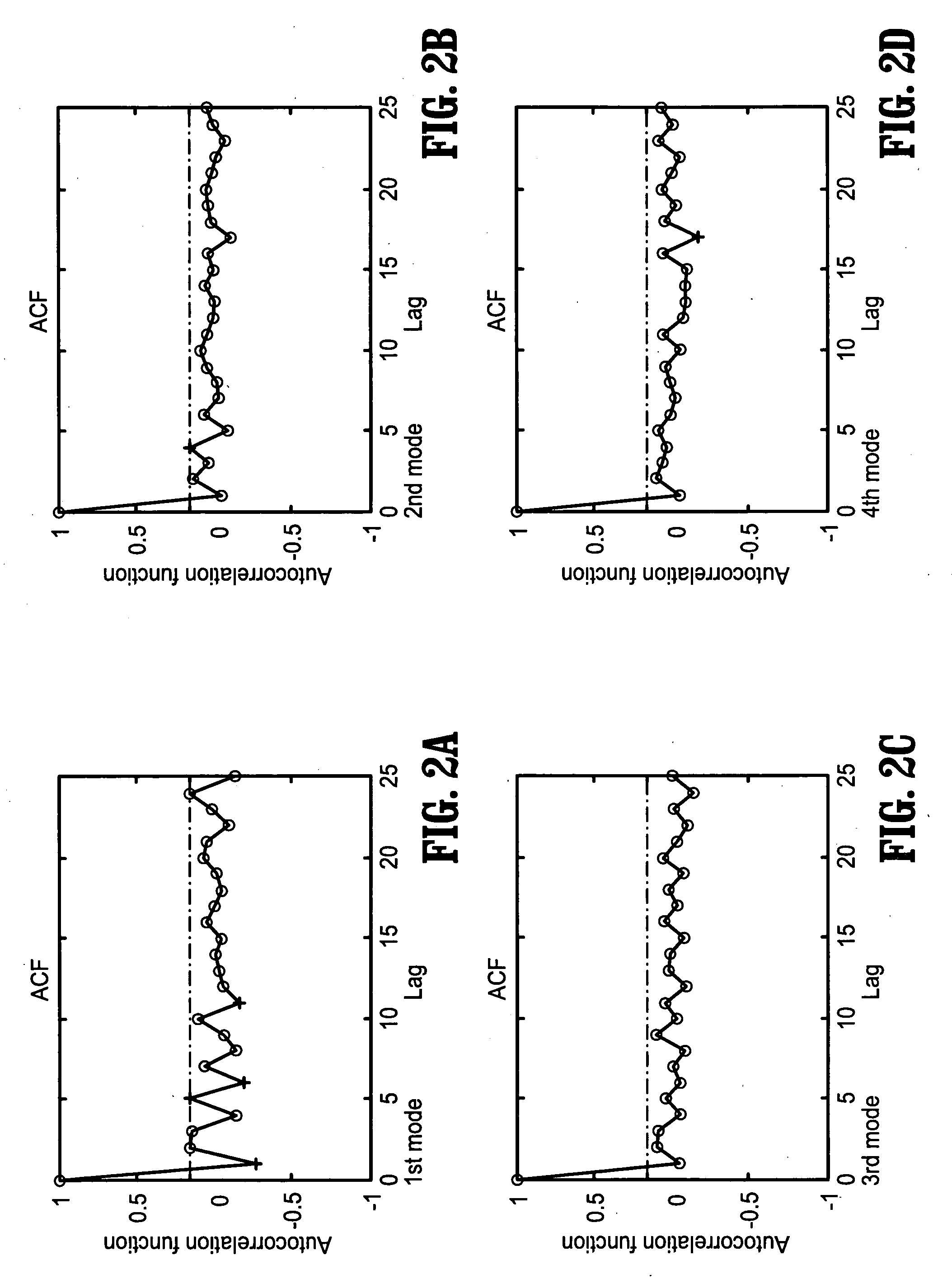Method for detection and tracking of deformable objects
a technology of deformation objects and tracking devices, applied in the field of object detection, can solve problems such as unsuitable for this task, and achieve the effect of increasing computational complexity and facilitating extension to higher-dimensional shape representations
- Summary
- Abstract
- Description
- Claims
- Application Information
AI Technical Summary
Benefits of technology
Problems solved by technology
Method used
Image
Examples
Embodiment Construction
[0039] Referring now to FIG. 13, a flow diagram is shown of a method for detection and tracking of deformable objects. Here, to illustrate an example of the method, the object is a walking person. It should be understood, however, that the method applies to other deformable objects including anatomical objects such as the beating human heart.
[0040] Before discussing the steps in FIG. 13, a Bayesian formulation for level set based image sequence segmentation will be introduced. First, the general formulation in the space of embedding functions will be discussed and subsequently describe a computationally efficient formulation in a low-dimensional subspace.
2.1. General Formulation
[0041] In the following, a shape is defined as a set of closed 2D contours modulo a certain transformation group, the elements of which are denoted by Tθ with a parameter vector θ. Depending on the application, these may be rigid-body transformations, similarity or affine transformations or larger transfor...
PUM
 Login to View More
Login to View More Abstract
Description
Claims
Application Information
 Login to View More
Login to View More - R&D
- Intellectual Property
- Life Sciences
- Materials
- Tech Scout
- Unparalleled Data Quality
- Higher Quality Content
- 60% Fewer Hallucinations
Browse by: Latest US Patents, China's latest patents, Technical Efficacy Thesaurus, Application Domain, Technology Topic, Popular Technical Reports.
© 2025 PatSnap. All rights reserved.Legal|Privacy policy|Modern Slavery Act Transparency Statement|Sitemap|About US| Contact US: help@patsnap.com



